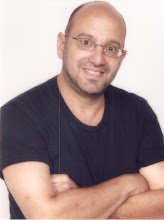As noted here several months ago, former National Writers Union president Jonathan Tasini is challenging Hillary Clinton for the Democratic nomination for senator from New York. Today’s
New York Times has a column by Bob Herbert highlighting the contrast between Tasini’s principled position against the war in Iraq and Clinton’s calculated vagueness. Good for Tasini. The manipulative and self-interested Clinton dearly deserves this opposition from her left flank.
This new coverage of Tasini prompted me to recheck the Federal Election Commission online database to see who has been contributing to his campaign. Only two of the 22 names listed are known to me.
One is writer Barbara Ehrenreich, who gave $2,100 last December 12. This is no surprise. Ehrenreich is an old friend of Tasini’s and a member of the NWU’s advisory committee of name writers. By remaining silent on the copyright class action settlement that Tasini helped to negotiate -- and that we objectors are seeking to overturn on appeal -- Ehrenreich is, like the “associational plaintiff” author organizations and the misnamed “class representatives,” enabling a horrible sellout. But we don’t need to beat that subject to death right now.
I’m more interested in the other Tasini campaign contributor whose name was familiar to me: Lawrence Lessig, who gave $250 on December 9.
As most of you know, Lessig is a Stanford University law professor, a writer on contemporary copyright issues for
Wired magazine and other publications, and the driving force behind the intriguing new Creative Commons. Without going into all the details, the Commons is a self-described “non-profit that offers flexible copyright licenses for creative works.” It goes some distance toward what I’ve called the kinder and gentler ASCAP regime that we need in new technologies. Just as I wish Tasini the best in giving Clinton all the grief she has sown, so do I wish Lessig luck in spreading his well-considered, if so far somewhat ethereal, concept.
My problem isn’t with the Copyright Commons as a necessary component of the solution to thorny copyright issues. Expansive definitions of fair use are fine. In fact they’re more than fine; they’re a bulwark against the two-tiered information society that threatens to undermine all the democratizing potential of the Internet.
No, my beef is with the stance of Lessig and others (going all the way back to first-generation futuristic web savants like Esther Dyson and John Perry Barlow) that such theoretical constructs are sufficient in a real world in which one side -- corporate publishers (including Lessig’s
Wired) -- is grabbing all the rights they can possibly acquire, by hook or by crook, while the other side -- independent creators -- is making nice.
So now that public records have revealed Tasini’s list of campaign contributors, I thought I’d share with all of you my own communications with the ever-quotable Professor Lessig, one of the media’s go-to guys for copyright stories. Last spring I emailed Lessig, among many others, for support for our objection project. On April 30, 2005, Lessig wrote back to me, “I need to avoid battles I don’t know enough about. This is one.”
Last fall, as our objections headed for appeal, I renewed the overture to Lessig. At this point, I suggested, the record of the settlement provided an ample knowledge base. On November 18 Lessig wrote back, “The issue you are pressing hangs upon a technical issue of law that is not anything I know about.”
Hmmm. One wonders what copyright experts do if not ponder “technical issues of law.”
I am reminded of the scene from
Inherit the Wind, the play about the Scopes Monkey Trial. The William Jennings Bryan surrogate character tells the Clarence Darrow surrogate character, “I do not think about things I do not think about it.”
And the worthy adversary responds, “Do you think about things you
do think about?”

